- Getting around Lijiang. Dont stay in the Old Towns more than 2 days, there is nothing to do. KRISS Oct 9, 2013 05:46
- 2013 Beijing Temple Fair BENNYLAU Feb 26, 2013 03:29
- Malaysian traveling from KUL - LAX vis Shanghai PVG ZATI_DY Jan 3, 2013 20:15
Datong & The Cloud Ridge Caves
- Views: 6303
- |Vote: 0 0
- |Add to Favorites
- |Recommend to Friends
Morning in Datong City
Long before I arrive in Datong, it makes its presence felt in a line of dark grime slowly infiltrating the pale blue morning sky. It is an ominous, if not unexpected introduction to this city in the north of Shanxi Province that was once the capital of the Northern Wei Dynasty (AD 398-494), but is now synonymous with its chief industry, the mining of one of our least favourite fossil fuels: coal.
Departing from the distant Manzhouli in Inner Mongolia, and after 7 slow hours overnight from Beijing, the train shunts tiredly into Datong Station. The platform is a sweeping arc of concrete, deserted except for the sentinel stewards, one per carriage. The poor train still has far to go, but I have not.
6.46am, and every Chinese city has already been up for at least an hour: the result is a cacophony of human and machine as the routines of another day are slipped into. The breakfast sellers are doing brisk business outside the station; their makeshift tables and chairs will be gone in an hour or so, after which finding breakfast will be almost impossible. Locals are eating the soupy soft tofu dish known as doufu nao (豆腐脑); a staple breakfast up here in the north. I join the slurping ranks on the roadside, downing my own favourite bowl of soyabean milk with a fried bread stick. Opposite, ancient buses grunt and fume out of a piece of wasteland, tyres scrambling over brick and rubble: the bus station.
Though many a taxi driver has tried to convince me otherwise, I am taking the bus, and it’s mostly stationary in the vast confusion of rush hour traffic. It just so happens that half the roads are currently being dug up, and journey times increase indefinitely as every conceivable mode of transport imaginable jostles for space on the few open streets. The pavements, if the piles of concrete slabs and dirt at the sides of the road might be called such, are filtering impatient motorcyclists through the high heels and suits of pedestrians. Unflattering similes abound, I write down that Datong is like a “warzone”, “earthquake-hit”, “the earth disgorging its guts”. The rising sun is beginning to burn my half of the bus, and I use my crumpled map as a fan: it’s going to be a long ride.
The Cloud Ridge Caves
16km outside of the city are The Cloud Ridge Caves, or Yungang Grottoes, a 1500 year old testament to the fact that the modern, unprepossessing Datong was once a thriving social and cultural capital. Cut directly into the sandstone cliffs belonging to Wuzhou Mountain, and stretching for approximately a kilometre, are a series of 20 large caves, and a couple of hundred smaller ones, containing 51,000 statues. In 2001, UNESCO recognised these caves as being one of the most important historical sites in the world for their representations of Buddhist art, sculpture and imagery.
Arriving at the grottoes, it seems as if a collection of houses has been built into the cliffs, the myriad square “windows” looking like some old tenement block built horizontally. On top, the walls of an ancient Qing Dynasty fortress sit like a crown.
It’s surprisingly quiet for a July day, and there’s no queue for buying a ticket. The tiny courtyard I enter into is empty, except for a small stall selling over-priced books and pamphlets. I pick up the English version, though to be honest it tells me little more than the information on the signs at the entrance of each cave. The site is clean, quiet and a pleasure to meander around for a few hours. It’s worth being patient enough to sit out the tourist-bus crowds who come round in their groups and flood the caves briefly, before disappearing again. If you understand Chinese you can even tag on to the end and listen to the commentary.
The Early Caves (16-20)
The 5 earliest caves are thought to be numbers 16-20, and they are arguably the most impressive, each containing a huge figure at least 13 metres in height. The caves were carved between AD460 and AD465, under the watchful eye of the head monk Tan Yao, and are thus known as the “5 Caves of Tan Yao”. Each figure represents an Emperor from the Northern Wei Dynasty, constructed at a time when the worship of the Buddha and the Emperor were one and the same thing.
Cave 20 is the most “open” cave, although originally a wall obscured the Buddha from full view. The Buddha, representing Emperor Wen Cheng, is sitting, meditating, and is 14 metres in height. This cave shows the typical features of a Buddha, with elongated earlobes, a round face and broad shoulders.
The Later Caves (1-4)
Caves 1-4 were the last caves to be constructed, and are perhaps the least visually stunning of the larger caves. Caves 1 and 2 are a pair, containing a carved central pillar in the shape of a two-storied pagoda. The largest of these caves is number 3, and whilst the walls are not intricately coloured or decorated, it contains a huge seated Buddha cut into the rock, who is flanked by two smaller Bodhisattvas. This cave, like none of the others, allows very close access to the carved figure, so that the real sense of its scale can be appreciated.
The Middle Caves (5-15)
These caves encompass the most elaborate colours and carvings, the largest caves and the single largest Buddha statue at the site. Cave 5’s main Buddha is 17 metres in height, and cave 6 is known for its 33 reliefs depicting the life, from birth to enlightenment, of Sakyamuni.
Cave 12 is filled with flying beings, singing, dancing and playing traditional Chinese musical instruments (such as the pipa, drums and flute); these figures are painted and carved on the walls and ceilings of the cave.
It is also worth trying to spot, in cave 8, the Hindu figures of Vishnu and Siva: Siva is depicted with 3 heads and 8 arms and seated on the back of a white bull.
Many of these caves also contain a large central Buddha figure carved onto the back wall. Around and behind this figure, a tunnel is dug into the rock, so that worshippers could walk around the image in a procession, as part of a rite known as circumambulation.
The Rest (21+)
There are a great number of smaller caves and niches that make up the full number of the grottoes, but many of these are difficult to see into, and really cannot compete with the spectacular showcase of the 20 main caves.
* * * * * * * * * * * * * * * * * * *
The miraculous grottoes leave me filled with a quiet awe; the heavy-lidded eyes of the colossal stone inhabitants are imbued with such serenity, that it’s impossible to gaze on any of the figures and not be similarly peaceful in response. Those who show the signs of their age, time having stolen their limbs, or weathered their rock, seem all the more mysterious and imposing. Rather like the vast inside of a cathedral lit up in sunlight, whether you are a believer or not, there is a silent magnificence here in these structures that cannot be denied.
Evening in Datong City
The prospect of returning to Datong is not especially enticing, but the afternoon is getting ready to leave, and the sky is beginning to put on its evening colours. I resolve to stop off at the Nine Dragon Screen before nightfall. It turns out to be a good decision.
Housed in a high-walled courtyard, beautifully hidden and seemingly a million miles from the centre of town, is one of the largest and best preserved glazed screens in China. It is 45 metres long, 8 metres high and over 2 metres thick. Originally forming part of his palace gate, it was built over 600 years ago in honour of the 13th son of Emperor Ming Taizu (the first Emperor of China’s longest dynasty, the Ming).
This summer’s evening, there are only a couple of other people here, and the willow trees overhead create a thick shade over the small stone stools and tables; it’s welcomingly cool and quiet. The screen is remarkable; the still vibrantly coloured gold and purple dragons cavort in a landscape of greens and blues. Each dragon is different, its facial expression and the twists of its body brilliantly realised so that it seems as though they might almost leap, breathing fire, from the brick. There is a stone bridge and a pool in front of the screen, but they are sealed off, and so the additional magic of the reflection of the screen in the water is left to my imagination.
Here, the dragons are majestic and gleeful, playing with globes of fire that might be the sun just lately plucked from the sky. 16 kilometres away, the Buddhas of the Yungang Grottoes are aloof and calm, meditating over their long, long existences. Outside the wall behind me, the city of Datong, and its couple of million inhabitants rush towards the end of another day.
Information (July 2009)
Getting There
Numerous options are available from Beijing, trains and buses, from various stations around the city. I chose an overnight train for cheapness and to save time.
From: Beijing North Station (北京北站)
To: Datong (大同)
Train Number: K273
Time: 7 hours (11.30pm from BJ, arrives 6.30am Datong)
Cost: ¥52 hard seat
The Cloud Ridge Caves/Yungang Grottoes (云冈石窟)
Entrance Fee: ¥60 per person
If you have been to the Mogao Caves in Dunhuang, the experience here is different. There is no guided tour and you are free to wander alone for as long as you like. Information signs in English give some basic information.
Take bus 4 from the train station and get off at Xinkaili (last stop); transfer here to bus 3 which will take you to the grottoes. Bus tickets are ¥1-2. Leave about an hour for this journey, assuming the streets are not being dug up!
Brilliant panoramic pictures of the grottoes are available here:
http://www.world-heritage-tour.org/asia/china/yungang/map.html
The Nine Dragon Screen (九龙壁)
Entrance Fee: ¥10
Take bus 4 from the train station and get off by the Drum Tower; the screen is just a short walk to the north east.



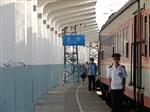
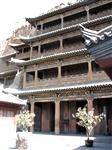

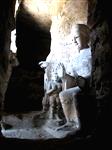
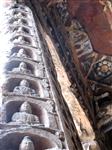
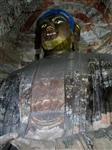


 Copyright © 1998-2026 All rights reserved.
Copyright © 1998-2026 All rights reserved.
1.
May 24, 2013 03:06 Reply
Ms.MIRANDA from Beijing, China said:
I have heard that there is a faster train. Is there a bullet train that gets to Datong from Beijing in 4 hours.
2.
Feb 3, 2010 10:03 Reply
TOAD said:
Thanks for this interesting article. I visited the Lishan caves in 2008 and was awe-strucked so am most tempted by your review. May just take a detour if i find time to visit Beijing later this year. Keep it up.